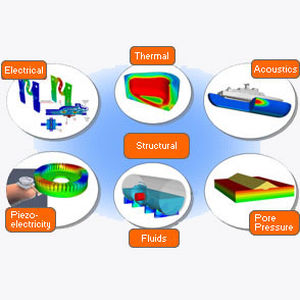The different physical disciplines such as structural mechanics, fluid dynamics, thermodynamics and electromagnetics are tightly connected because the interaction between multiple physical phenomena and the conversion of energy from one form to another is crucial to most industrial applications.
For example, to design efficient and reliable lithium-ion batteries, engineers must account not just for the electrochemical behavior but also for thermal runaway and fluid dynamics of the electrolyte and structural bending and swelling. Even during manufacturing, multiphysical effects must be controlled, whether the plastic flow in injection molding or moisture build-up during electronic assembly.
The Abaqus Unified FEA product suite has significant capabilities for solving multiphysics problems. These capabilities, developed over many years and fully integrated as core Abaqus functionality, have been used extensively for many engineering applications on products and engineering projects today.
Multiphysics technology has been a part of Abaqus from the beginning. Starting with Abaqus V2 (in 1979), Abaqus/Aqua simulates hydrodynamic wave loading on flexible structures for offshore pipelines. Through the years, additional multiphysics capabilities have been added, such as fluid, thermal, electrical couplings, and many others listed below.
Creating a Multiphysics Simulation Flow in Abaqus
To address these challenging applications, Abaqus offers a range of multiphysics simulation capabilities, including sequential results mapping, fully-coupled solution procedures


